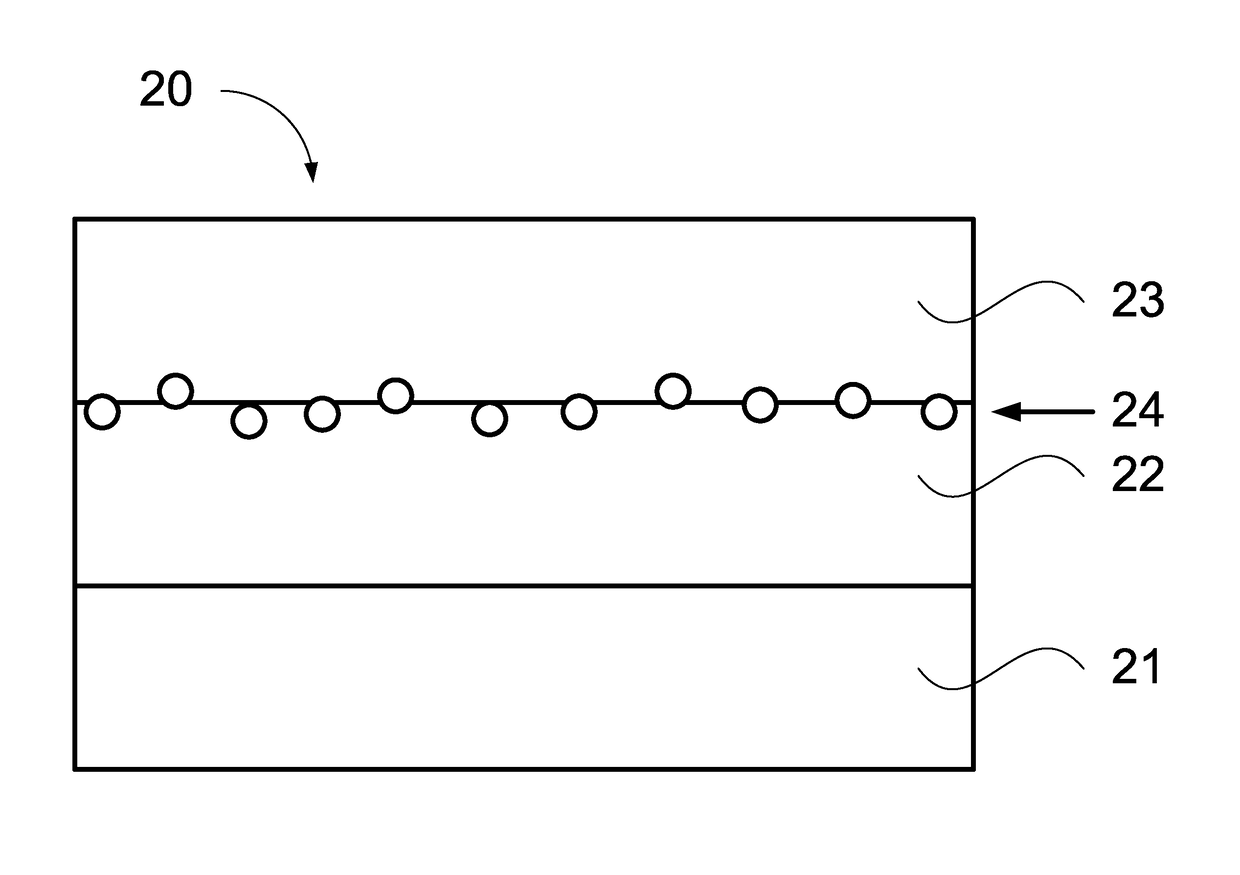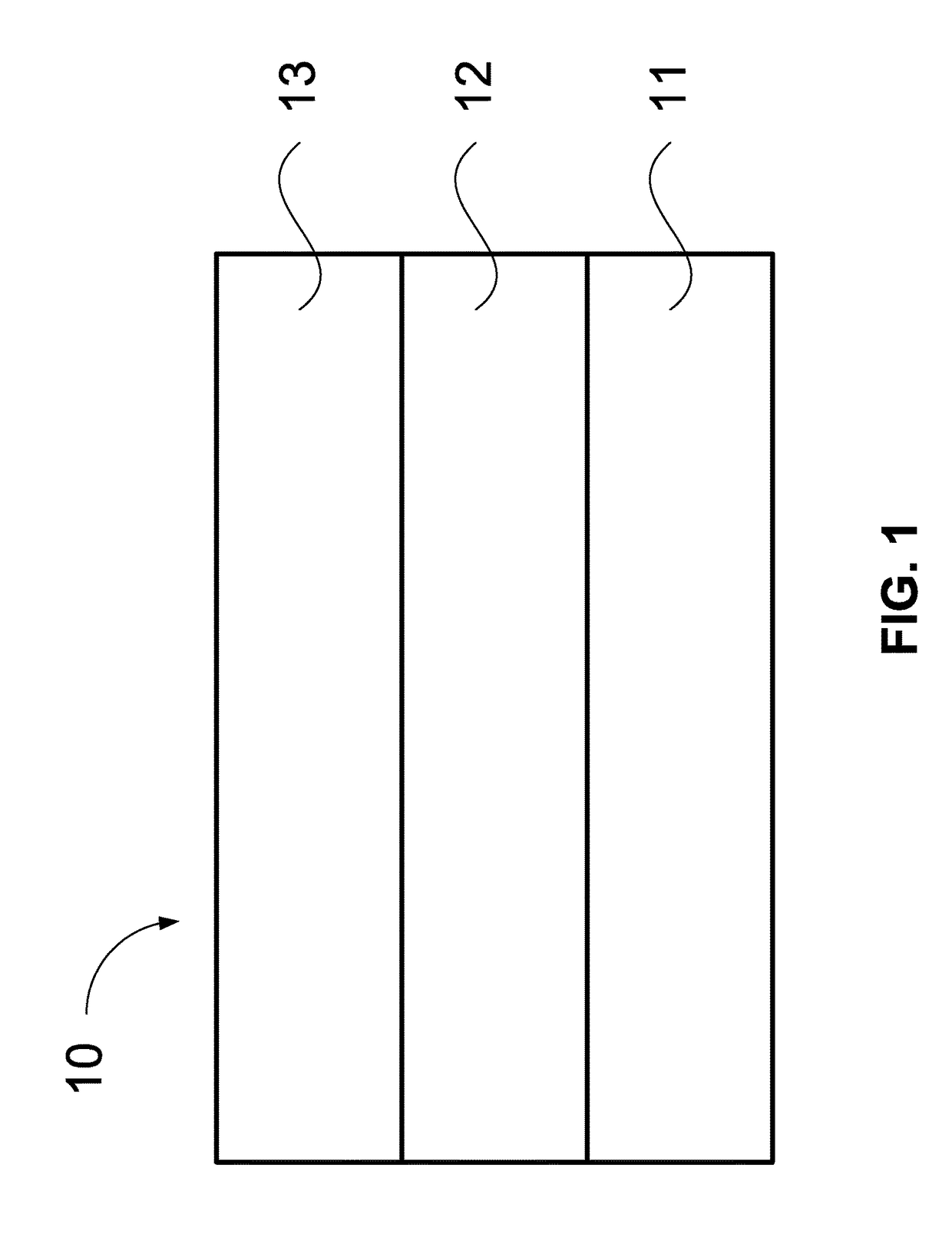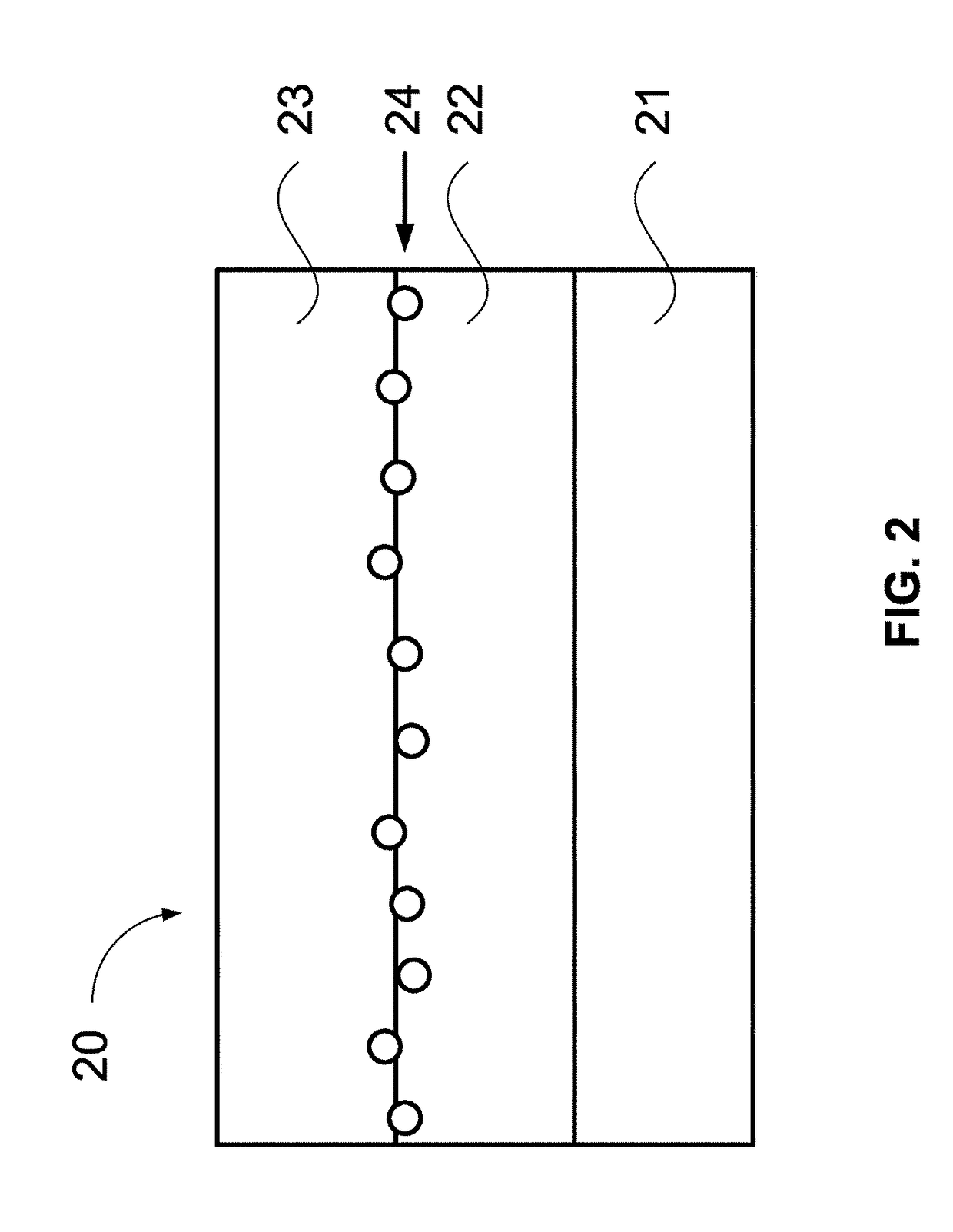Organic negative electrode with chlorophyll and battery using the organic negative electrode
a negative electrode and chlorophyll technology, applied in the field of negative electrodes, can solve the problems of unstable electrochemical reactions, frequent use or release of environmental pollutants, lithium batteries,
- Summary
- Abstract
- Description
- Claims
- Application Information
AI Technical Summary
Benefits of technology
Problems solved by technology
Method used
Image
Examples
second embodiment
[0026]As shown in FIG. 2, the organic negative electrode 20, according to the present disclosure, may comprise a first element 21, a second element 22, a third element 23, and an additional material 24.
[0027]The configuration of the first element 21, the second element 22, and the third element 23 are substantially the same as that of the first element 11, the second element 12, and the third element 13 mentioned above. The additional material 24 includes metal shavings. The additional material 24 can be disposed between the second element 22 and the third element 23. The metal shavings can also be arranged on a contact surface between the third element 23 and the second element 22 by spreading or coating. Alternately the metal shavings may form a separate element. The metal shavings could enhance the electrode conductivity of the organic negative electrode. A mechanism for adding the metal shavings to the organic negative electrode is mainly described as following: slow the work fu...
third embodiment
[0028]FIG. 3 is a schematic view of an organic negative electrode according to the present disclosure. As shown in FIG. 3, the organic negative electrode 30 may comprise a first element 31, a second element 32, a third element 33, an additional material 34, and a fourth element 35. The configuration of the first element 31, the second element 32, the third element 33, and the additional material 34 are substantially the same as the configuration of the first element 21, the second element 22, the third element 23, and the additional material 24 mentioned above.
[0029]The fourth element 35 that comprises an organic separation membrane can be disposed between the second element 32 and the third element 33. The organic separation membrane can be high-fiber materials with adsorbed organic or inorganic salt solution. The high-fiber materials can be paper material, including cellophane, cotton paper, and rice paper. The diametric length of the pore of the high-fiber material prefers to be ...
PUM
| Property | Measurement | Unit |
|---|---|---|
| weight | aaaaa | aaaaa |
| diametric length | aaaaa | aaaaa |
| thickness | aaaaa | aaaaa |
Abstract
Description
Claims
Application Information
 Login to View More
Login to View More - R&D
- Intellectual Property
- Life Sciences
- Materials
- Tech Scout
- Unparalleled Data Quality
- Higher Quality Content
- 60% Fewer Hallucinations
Browse by: Latest US Patents, China's latest patents, Technical Efficacy Thesaurus, Application Domain, Technology Topic, Popular Technical Reports.
© 2025 PatSnap. All rights reserved.Legal|Privacy policy|Modern Slavery Act Transparency Statement|Sitemap|About US| Contact US: help@patsnap.com



